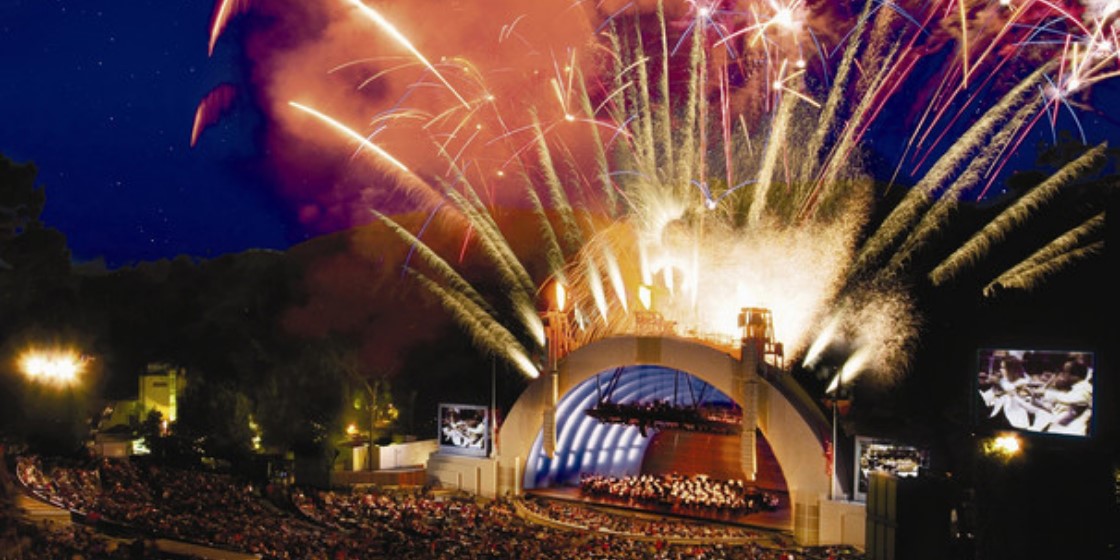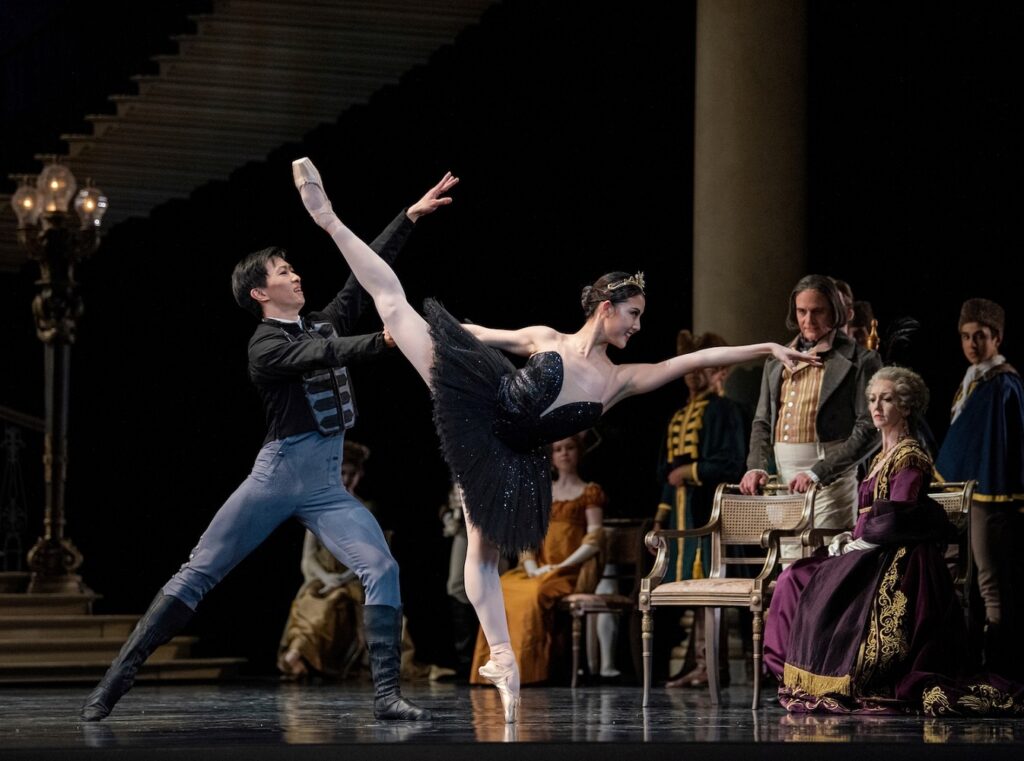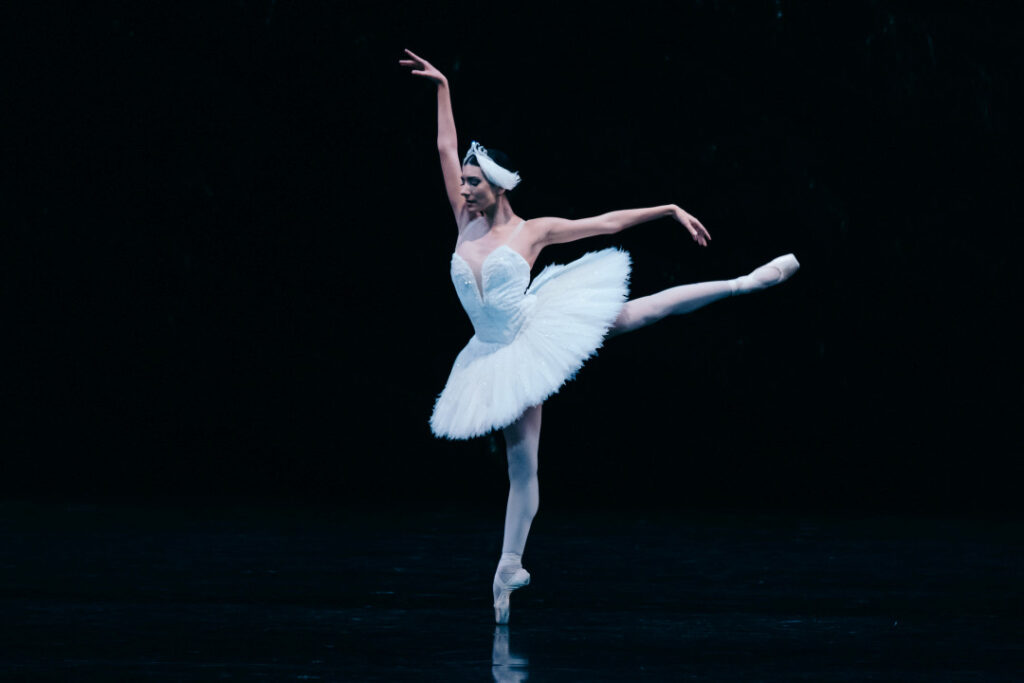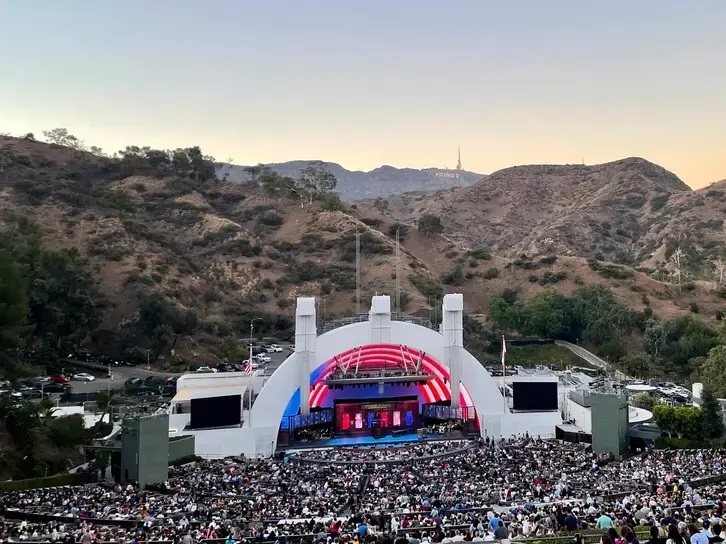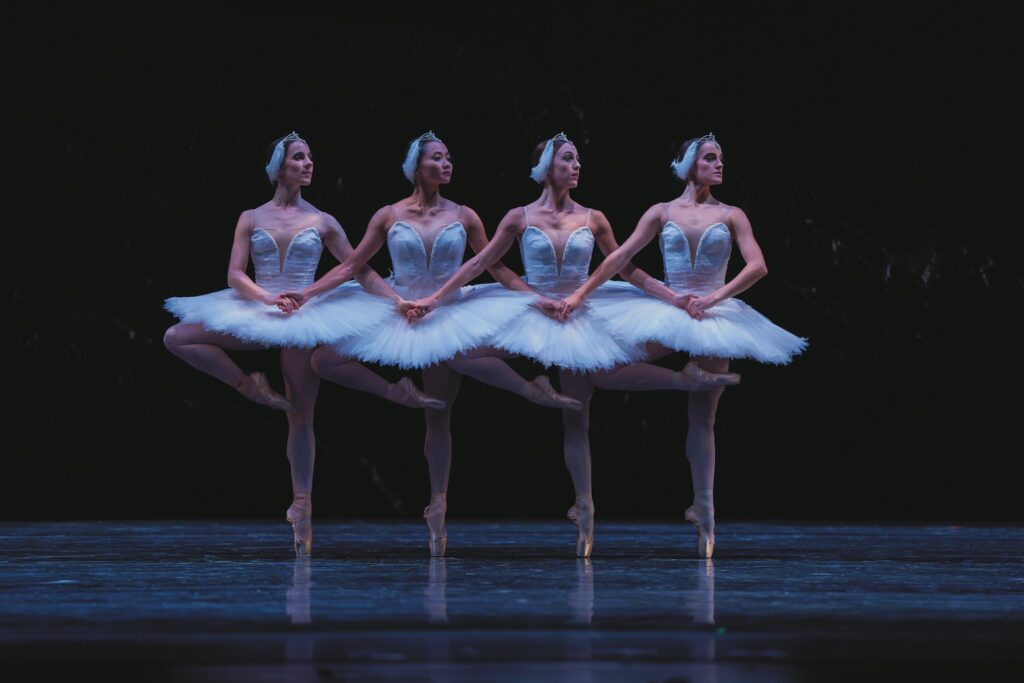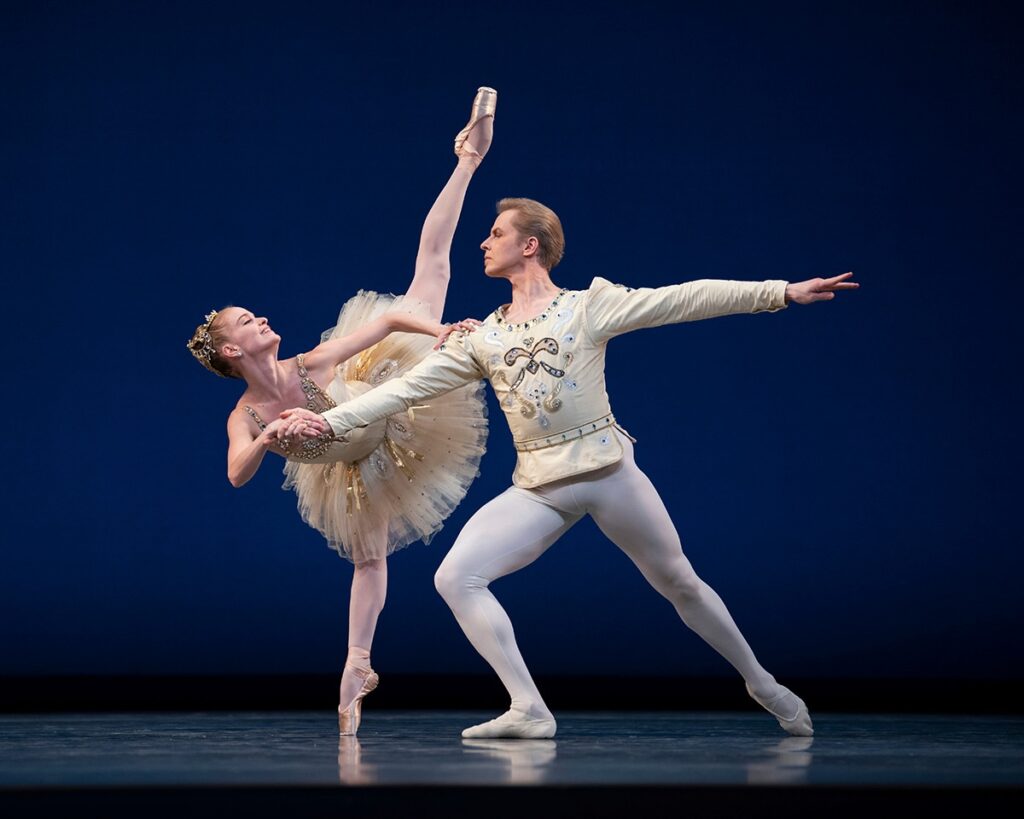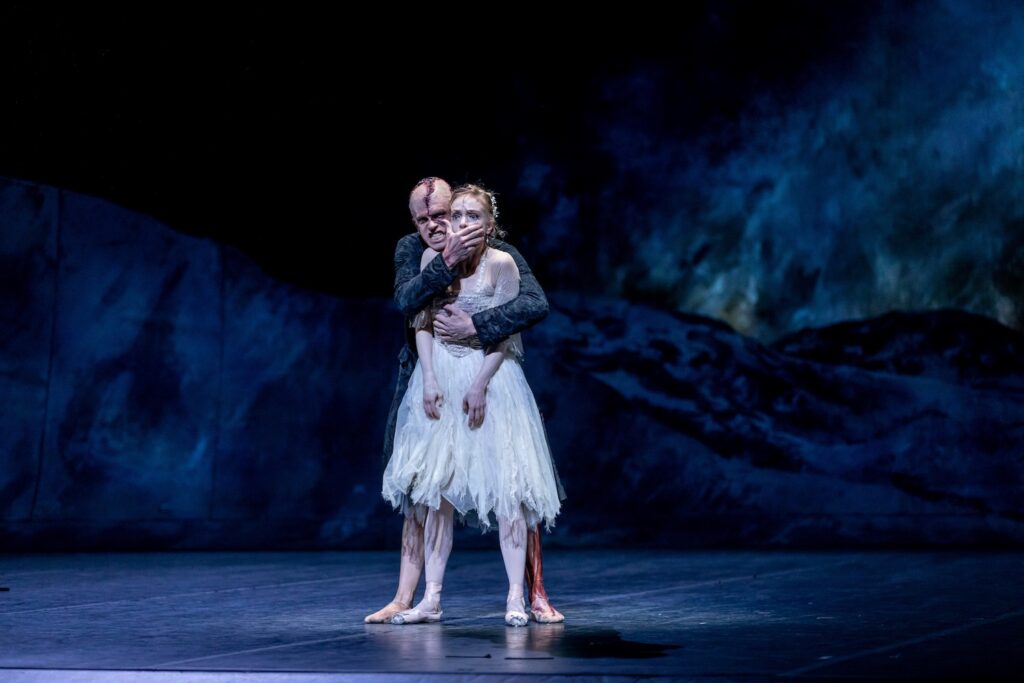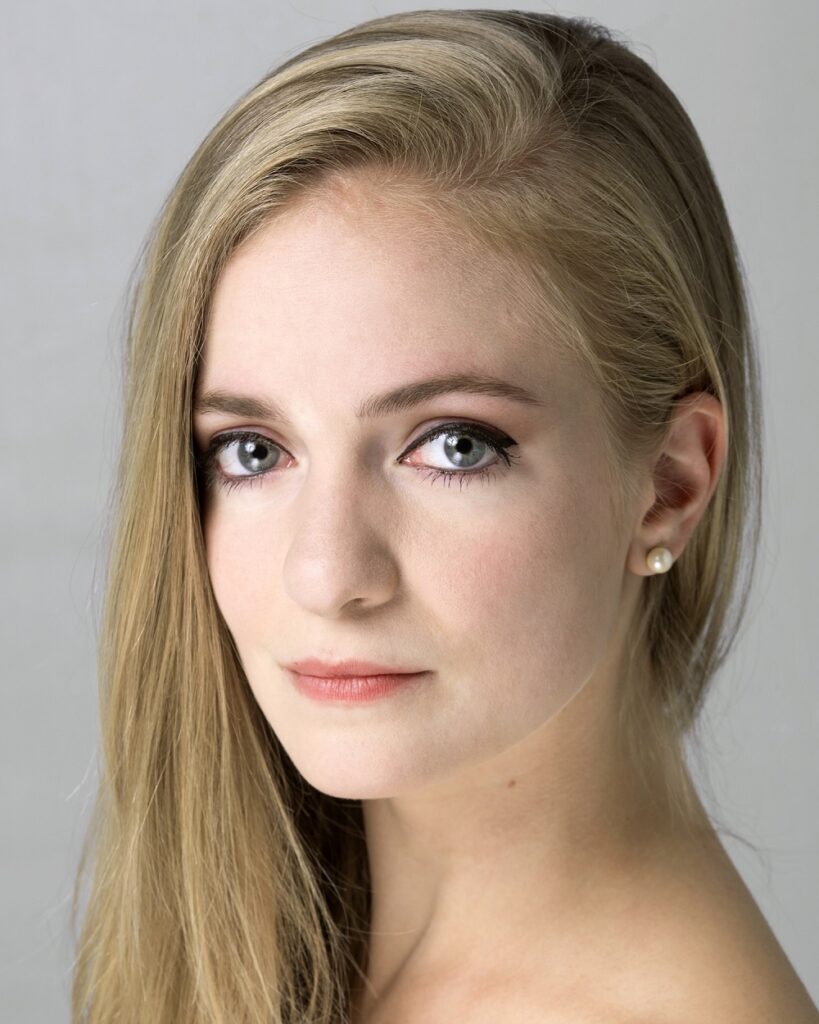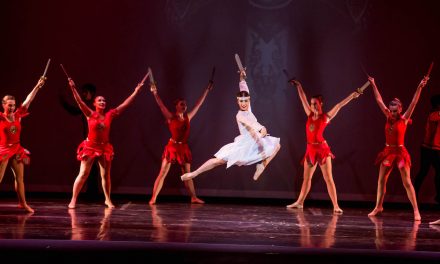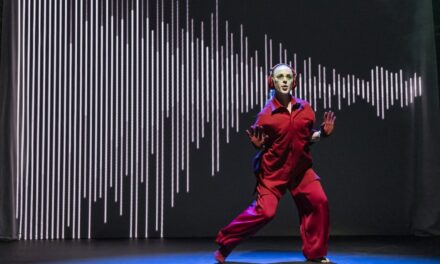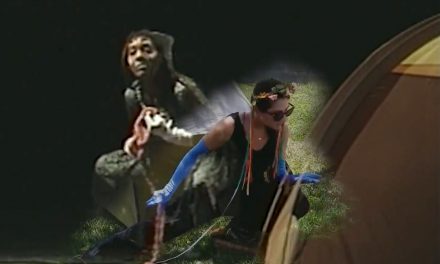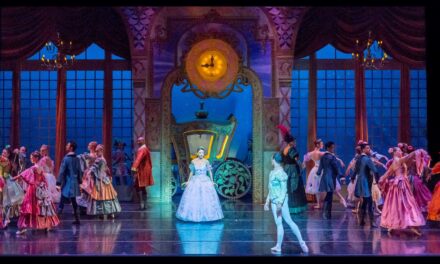Before the cannon and fireworks flare this weekend at the Hollywood Bowl Tchaikovsky Spectacular, San Francisco Ballet takes center stage. SF Ballet stars join the LA Phil and conductor Carlos Miguel Prieto in three excerpts from Swan Lake and George Balanchine’s Diamonds before the 1812 Overture finale.
In recent years, San Francisco Ballet has been an infrequent visitor to LA. Under new artistic director Tamara Rojo, this Hollywood Bowl visit and scheduled October performances of Frankenstein may signal more frequent SoCal appearances for one of America’s oldest and most admired ballet companies. The Hollywood Bowl shows are both a chance to enjoy and a chance to get to know some of SF Ballet’s stars.
First up, three iconic moments from Swan Lake. The Black Swan pas de deux features principal dancers Wona Park and Wei Wang, followed by principal dancers Jasmine Jimison and Joseph Walsh in the White Swan pas deux. The perky Dance of the Cygnets (the Little Swans) showcases soloists Katherine Barkman, Isabella DeVivo, Carmela Mayo, Julia Rowe. After intermission, George Balanchine’s Diamonds pas de deux belongs to principal dancers Sasha De Sola and Harrison James.
Sasha De Sola took time from rehearsal in San Francisco to talk with dance writer Ann Haskins about the Hollywood Bowl and the challenges performing on an outdoor stage before 17,000 people, the Frankenstein ballet coming in October, and her experience in the company’s new leadership program. (The interview has been edited for length and clarity.)
Haskins: To start, I’d like to talk a bit about the difference between performing in a theater and dancing at an outdoor theater like the Hollywood Bowl. The company summer season also included performances on an outdoor stage at the Stanford Frost Theatre. Are there lessons from that for dancing at the Hollywood Bowl?
De Sola: As a dancer, I think one of the biggest factors is the lack of ability to control the temperature. Whether it’s really warm or really cold, as it generally can be in San Francisco summers, that is one of the biggest challenges of dancing outdoors. At the same time, there’s also this very freeing quality. I know that maybe this is a bit cheesy, but just feeling the fresh air on your skin gives a different energy, and I find I have a different quality to performances that are outdoor versus indoor. The Stanford facility has the audience seated on a lawn, maybe seating a few thousand. I have never been or performed at the Hollywood Bowl, and I’m so excited. I’ve only seen it on TV, in the media. I expect it will be pretty impressive.
Haskins: The Hollywood Bowl has a very wide stage and with the orchestra behind the dancers, that reduces the stage depth. Are you and the other dancers doing any special preparations or adjustments for those factors?
De Sola: There are definitely different dimensions at the Hollywood Bowl than at the Opera House stage. But because we’re doing pas de deux and smaller pieces, it’s easier to adjust to the stage requirements. That being said, it’s going to be really nice to feel the LA Philharmonic right behind us, to feel the music so close. Instead of coming up from the front of the orchestra pit, it will be coming from the back and over us.
Haskins: Of the four works being danced, three are from Swan Lake, the White Swan pas de deux, the Black Swan pas de deux, and the ever popular four Little Swans. You are dancing the only non-Swan Lake, the pas deux from George Balanchine’s Diamonds. Please tell me about Diamonds?
De Sola: As with many Balanchine ballets, Diamonds technically is a plotless ballet. I think the pas de deux works beautifully, both within the larger ballet and also alone. Just because it’s a plotless ballet doesn’t mean that there isn’t an undercurrent of a story going on. But most of all, I think one of my favorite things about dancing Diamonds is the music. Maybe I don’t need to say that, because it’s kind of a given, but the music really informs the experience of dancing it and what the ballerina, the “diamond,” is and feels. It’s the same with her Cavalier and the atmosphere that we create together. So the music is, I would say, the number one factor and that is what guides all the rest of the almost 10 minutes that happens.
Haskins: Although it is abstract, there is a suggestion of or an undercurrent of a story. What is that for you?
De Sola: I have danced Diamonds many times before, and it has been many different things. For me, it’s rooted in this regality and grandeur of the Mariinsky Russian ballet and Russian ballerinas. That always informs it. One of the things that is so beautiful about dancing Balanchine ballets is the music can guide you as an individual. So me as Sasha, what do I bring to it? And the same with my partner. So dancing with Harrison James, we need to create this atmosphere. We’ve been playing around with different interpretations and different ways to approach it. But most of all, I’m going to follow my instinct on that evening’s performance. One evening might vary from another, and that’s the beauty of live performance. Maybe the music will be slightly different and give me a different impetus, or maybe Harrison will, or maybe it will come from within, but that’s the beauty of it. It’s alive, it’s spontaneous, it’s authentic, but always under that umbrella of regality and this other worldly, untouchable diamond symbolism.
Haskins: The company performs with its own San Francisco Ballet Orchestra which supports the company’s San Francisco Ballet’s performances. Its purpose is to support the ballet. And there is, I understand, accommodation, shall we say, for how different principal dancers approach specific pas de deux or solo moments. The LA Phil does not usually work in a context where they are supporting someone else; usually they’re supporting the conductor’s vision. How will it work for the Bowl performances?
De Sola: Well, we will have a few rehearsals with the LA Phil, and additional rehearsal with the conductor alone. So it is a collaborative experience. I think it’s a mutual sense of support. The music supports the dance, but then the dance supports the music. It’s always encouraging to know that we will have some rehearsal with the conductor beforehand, and one rehearsal with the LA Phil before the opening as well. We’ll get to hear and feel and sense the way that they breathe through the music – the crescendos, the tempi, all of the things. That will also help inform me. Once I hear the music, I’ll also feel that I have a direction to go. There are a few things that need to be based on the dance. For example, at the end of Diamonds, the Cavalier kisses the ballerina’s hand, and that needs to be in tempo with the movement when it happens. It will be up to the conductor to make that happen and we will work together on that.
Haskins: For the Hollywood Bowl, we will see excerpts, but this October, the company will bring the full length Frankenstein to Segerstrom in Orange County. Frankenstein was performed as part of last season and if I’m correct, audience demand fueled it being brought back at the end of the season for encore performances. Since most of Southern California will be seeing it for the first time, please talk about Frankenstein.
De Sola: Well, Frankenstein is quite the opposite of the non-narrative Balanchine ballet that we’ve been talking about. Frankenstein is a very narrative ballet, very story driven, based on Mary Shelley’s 1818 novel. It’s a very cinematic ballet that draws you in with the storytelling, which makes it fun. I’ve danced the role of Elizabeth, who is Victor Frankenstein’s love. She is the light within the work. Frankenstein is quite a dark story, perfect for the Halloween season, but also a perpetually relevant story when it comes to discussing technological advances and their unknown repercussions. Elizabeth is the humanity and the goodness in the world, and that creates a little bit of levity and light in the work.
Haskins: Has there been any casting for Segerstrom in October? Are you dancing?
De Sola: I hope that I am, but this week is the whole company’s first week back to work for the 2025-26 season. Some of us started a little bit earlier to prepare some other ballets and to get ready for the Hollywood Bowl.
Haskins: Your career has entirely been with San Francisco Ballet as an apprentice in 2006 to principal dancer in 2017. You have a very long list of all the ballets you have done and choreographers whose work you have danced. Do you have a bucket list with ballets you still would like to tackle or choreographers you’d like to work with?
De Sola: I feel so fortunate that all of those huge dream roles that I’ve wanted to tackle, or people that I’ve wanted to work with, for the most part, I’ve been able to do. I feel super fortunate about that and very grateful. Of course, there’s always more. I love what I do, and I will always want to do more and more. One of those roles is Tatiana in Onegin. I am drawn to roles that portray women with a huge, a really large arc for them. Basically, Tatiana is a girl that matures into a woman who can really stand on her own two feet. We don’t always get a chance to portray that type of character. I mean, I enjoy classics like Giselle too, but it is just a different, different perspective, different girl.
Haskins: Is Onegin part of next season in San Francisco?
De Sola: It is. Just by chance, Yuri Possohkov is choreographing a new Eugene Onegin. I haven’t started working on that at all. I’m so curious and excited to see what he creates, and more excited to make my own Tatiana.
Haskins: One other thing I wanted to touch on is the San Francisco Ballet’s Raising Leaders program that you and Julia Rowe were the first two selected. How is that going and do you have an idea at this point where it is taking you?
De Sola: It was a one year program that just finished up. The main portion of my experience was being able to go to Europe and immerse myself in two different companies, the Royal Swedish Ballet and the Dutch National Ballet. I was there basically the whole month of May, getting to meet with all the different major stakeholders of the companies, spending a lot of time with the directors, Nicolas La Riche in Sweden, and Ted Brandsen in Amsterdam. That time allowed me to be able to ask and feel and understand the day to day of each person in their position, the things that are fulfilling, the things that are challenging, the things that they hope for when we talk about the future of ballet. I fully recognize how lucky I am to have that. It’s a rarity in the ballet world, especially if you’re still dancing. I just tried to soak in everything that I could. I have pages and pages of notes on my iPad to digest. It was a really inspiring experience overall.
Haskins: Did that experience give you any new insights or perspectives on San Francisco Ballet, which you’ve known from the inside for so long.
De Sola: San Francisco Ballet is my home. I love this company. I adore the people within it. I adore the people in San Francisco. One of the themes that I felt throughout my European visits was how much I loved my home company. One insight is the very different way that ballet is funded in Europe and here. In Europe, ballet companies are primarily government funded. U.S. companies are mostly funded by private donors and ticket sales. This results in different ways to function and sometimes a different set of priorities in Europe and the U.S. The experience fueled my love for the art form, for San Francisco, and for ballet on the West Coast, especially. It just made my wheels start turning about what does that mean in 10, 20, 30, 40, years, and what, what are we bringing to the table?
Haskins: Is there anything else you’d like to talk about?
De Sola: I guess the only thing that might be a fun little tidbit is the programming is Swan Lake in the first half, and then in the second half I’ll be dancing Diamonds. Actually, Tchaikovsky composed the music for Diamonds just a few years before he composed Swan Lake, and it is so apparent in the score. You can hear the undertones of Swan Lake coming out of the music he composed for Diamonds. That actually can be a big challenge, because Diamonds is not Swan Lake. Even if I feel the intentionality of what feels like a pseudo Swan Lake, I can’t let that take over when I’m dancing Diamonds. After that, I think we get the USC marching band, cannon, and fireworks with the 1812 Overture. That will be fun.
San Francisco Ballet with LA Phil at the Hollywood Bowl, 2301 N. Highland Ave., Hollywood; Fri.-Sat., July 18-19, 8 pm, $18-$237. Hollywood Bowl. For more information about San Francisco Ballet, its dancers, the 2025-2026 season, and the October 2025 Frankenstein performances at Segerstrom Center for the Arts, go to San Francisco Ballet.
Written by Ann Haskins for LA Dance Chronicle.
Featured image: Hollywood Bowl with fireworks – Photo courtesy of The Bowl.

